WAGO Control devices, buttons
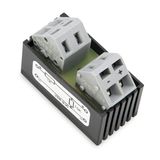

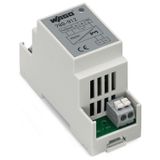
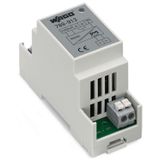
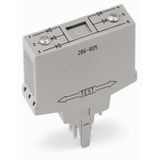
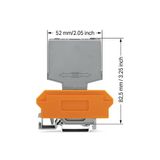


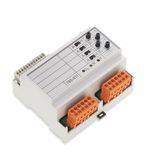


Panel builders looking for compact, service-friendly operator hardware usually land on WAGO for two reasons: clean DIN-rail integration and a catalog that actually reflects how machines are wired. Beyond terminals and I/O, the portfolio covers pilot devices, HMIs, and panel accessories so your enclosure door and your backplate ship as one coordinated kit.
wago control devices portfolio for panels and machines
Think in families, not loose parts. You get modular 22 mm operators for doors and pedestals, matching contact blocks, LED elements in common voltages, key and padlockable variants, and door-through assemblies that snap into standard cutouts. For the backplate side, carriers and adapters line up with your DIN rail so pilot wiring, labeling, and test points stay consistent across cells. If you standardize on wago control devices, your door hardware, HMIs, and terminal rail share the same accessories and markings.
wago push button switches actuation styles and head options
Heads come round, square, low-profile, or extended, with momentary or maintained actions. Clear lens modules accept replaceable LEDs; opaque mushroom heads suit gloved use. Contact stacks assemble as NO/NC in any order, and the lamp unit can be swapped without disturbing the wiring. For washdown cells, choose sealed bezels; for inspection bays, use illuminated types to mirror PLC states. In mixed-voltage panels, label carriers let you code wago push button switches by function without inventing a new legend system.
wago selector switches functions and interlocks
Two- or three-position units cover I-0-II, Hand-0-Auto, Jog-Stop-Run, and spring-return options. Key-operated versions keep mode changes under permit, while removable handles deter casual operation during maintenance. Mechanical coding prevents the wrong contact block stack from being fitted, and detent torque is set for reliable tactile feedback in vibration. When drives share a common door, tie wago selector switches to the same handle style and legend set so your operator station looks and feels uniform.
wago emergency stop buttons mushroom heads and safety logic
E-stops use twist-to-release or key-release with direct-opening contacts and positive-guided blocks that suit safety relays. Available guards reduce accidental trips on crowded doors; illuminated versions help technicians see at a distance which zone is latched. Where robot cells are fenced, cable-pull actuators and door interlocks round out the station, and accessory brackets put the button exactly at elbow height. In layouts with multiple machines, map wago emergency stop buttons to local reset protocols so restart sequences stay compliant.
wago control panels HMI families and sizes
For visualization, pick by series and screen class. Touch Panel 600 brings capacitive multi-touch, glass fronts, and web-visualization that pairs nicely with modern PLC pages; Visual Panel 200 focuses on rugged, daylight-readable options for plant floors; legacy PERSPECTO® units still serve as drop-in replacements on upgrades. Mounting kits cover flush, panel, and VESA; front faces keep a clean, serviceable look next to pilot devices. When you standardize wago control panels, your faceplate cutouts, power feeds, and spare Ethernet drops stay the same from cell to cell.
wago automation controls integration with PLC and I O
Operator devices come wired to spring-clamp blocks, so field technicians land fine-stranded conductors without ferrules. HMIs speak PLC web pages and common protocols; pilot contacts drop into safety relays, soft-starter enable chains, and drive terminals without odd adapters. Use the same label strips and wire markers across the door and the rail, and build your test routine around probe-friendly points. If your site leans on wago automation controls, the commissioning script reads the same whether you’re building packaging skids or HVAC AHUs.
wago operator devices accessories and labeling
Door hardware lives or dies by accessories. You’ll find legend plates in standard heights, clip-in label carriers, padlock hasps for LOTO, anti-rotation rings for thin doors, and spacers for insulated panels. For hygienic areas, choose smooth-bezel heads; for dark MCC rooms, add halo-lit rings. Alignment tabs keep the operator straight during tightening so legends line up. Use wago operator devices with the same print stock you already run for terminals to simplify spares and audits.
Technical specifications and standards that matter
Use specs to confirm fit, not to drown the drawing: 22 mm round cutouts with anti-rotation notch; modular NO/NC contact blocks; lamp elements in common control voltages; front IP ratings suitable for the zone; HMI families with fanless design and panel/flush mounting. Keep conductor ranges in the same band as your terminal system so spare wire ends and ferrules remain consistent.
Applications and compatibility
- Machine panels and skids: momentary start/stop with illuminated feedback, selector for Hand/Auto, E-stop with guard, compact HMI for recipe and alarm views. These stations pair cleanly with WAGO terminals and power supplies so spares stay unified.
- Utilities and HVAC: latching pump handovers, remote enable chains, illuminated status heads on plant room doors, mid-size HMI near the BMS node. For operator familiarity, specify identical actuator shapes across buildings.
- Food and washdown: sealed bezels and smooth fronts, guarded E-stops, and stainless legend carriers; HMIs with glass fronts are easier to clean.
Integration with other WAGO products
Keep the door and rail in one ecosystem: feed pilot devices into TOPJOB® S terminal rows, route to PFC controllers, and expose diagnostics on Touch Panel 600. Jumper bars and test adapters mirror the same geometry, so your build packs don’t multiply. When motion is involved, put the selector’s safety channel into the same relay family you use for gate switches, and log status to the HMI alarm list.
Selection criteria for B2B buyers
- Decide the station layout choose head shapes, lens colors, and legend scheme; add guards where accidental actuation is possible.
- Map modes and safety pick selector functions and key control, define E-stop reset policy, and match positive-guided contacts to the safety relay.
- Choose the HMI class size by viewing distance and pages; keep one family across cells for spare parts.
- Unify wiring practice spring-clamp throughout; align wire sizes, ferrules (if used), and label stock with the terminal rows.
- Document spares keep identical contact blocks and lamp modules across lines; standardize extractor tools and gaskets.
Advantages of working with Bankoflamps
We keep panel projects moving on predictable trade terms: tailored B2B pricing with custom quotes, plus a dedicated account manager who learns your standards. Quote replies arrive fast—about an hour—and EAN or MPN ordering is straightforward. In the portal you can check real-time stock across EU warehouses, see lead times and order status, and download price lists that stay current; purchase history and analytics are there for planning. Trusted accounts get up to 30 days post-payment. We consolidate consignments to trim delivery costs, hold prices with clear validity windows, and support customers in France, the Baltics, Germany, Spain, Italy, Belgium, and the Netherlands